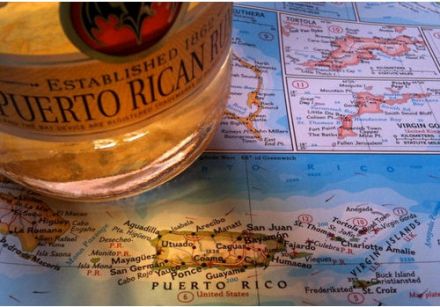 |
Flavors of Puerto Rico > Agriculture, sugar cane and coffee
The rich and fertile fields of Puerto Rico produce a wide variety of vegetables, such as the pearshaped chayote, which is reminiscent of summer squash; breadfruit, which is similar to the sweet potato; and plantains, which are the single most popular side dish on the island. Plantains are a variety of banana that cannot be eaten raw. They are coarser in texture, harvested when green and then baked, fried or boiled.
Of all that is grown in Puerto Rico, none is more famous than coffee or sugar cane, from which the national drink of rum is produced. Coffee beans have been produced in the island’s highaltitude interior for more than 300 years and still rank among the island’s leading exports. Only three coffees in the world belong to the top super-premium class: Blue Mountain coffee of Jamaica, kona coffee from Hawaii and Puerto Rico’s homegrown Alto Grande. The best brand names for Puerto Rican coffee are Café Crema, Café Rico, Rioja and Yaucono. Visitors can ask for their brews puya (unsweetened), negrito con azúcar (black and sweetened), cortao (black with a drop of milk) or con leche (with milk).

It is believed that Ponce de León introduced rum to Puerto Rico during his governorship, which began in 1508. Since then, sugar cane cultivation and rum production has become a national pastime. Puerto Rican rums are generally light, gold or dark – ideal for mixed drinks or on the rocks, depending on which type is selected. There are 24 different rums from Puerto Rico sold in the U.S. under 11 brand names: Bacardi, Don Q, Barrilito, Ron Bocoy and Ronrico, to name a few.
The island’s topography and mix of urban and rural areas accounts for the variety in cuisine from region to region. For example, the restaurant scene in the metropolis of San Juan is booming with international cuisine enhanced by Puerto Rican flavors. The central mountainous region of the island is known for coffee plantations and the taste of lechon asado.
The southern end of the island grows in root vegetables and sugar cane, and is home to the Don Q rum headquarters. Finally, the western region of Porta del Sol offers a large variety of gastronomic inns, or Mesones Gastronómicos, small, family restaurants serving up the freshest seafood, citrus fruit and other local produce, served in traditional or new “nuevo criollo”-style Puerto Rican cuisine.

-

 Recipes
Recipes
-

 Products
Products
-

 Entertaining
Entertaining
-

 Chefs
Chefs
-

 Hints & Tips
Hints & Tips
-

 Glossaries
Glossaries








